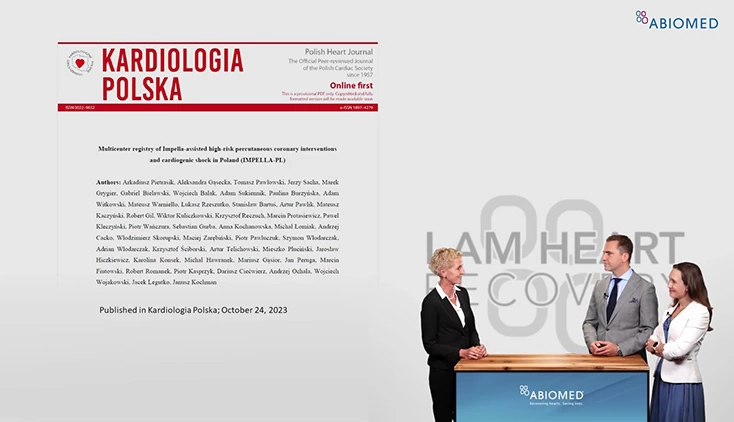Clinical Research & Data, Complete Revascularization, Protected PCI
ESC 2023: Predictors of 90-day Outcomes from York Analysis
Vasileios Panoulas, MD, FRCP, PhD, FESC, discusses his European Society of Cardiology (ESC) 2023 presentation of a pooled analysis of the PROTECT II randomized controlled trial (RCT) data and RESTORE EF data. This third-party analysis—known as the York analysis—was conducted by the York Health Economics Consortium, an independent research company in England. Dr. Panoulas is a consultant interventional cardiologist at Royal Brompton and Harefield hospitals.
Dr. Panoulas states that several studies have shown that more revascularization leads to better outcomes for patients. He highlights results from an earlier analysis of the York data showing a 40% relative reduction in residual SYNTAX score (rSS) in patients treated with Protected PCI with Impella® heart pumps versus intra-aortic balloon pump (IABP).
In this ESC 2023 presentation, Dr. Panoulas and colleagues examined factors predicting outcomes at 90 days in high-risk percutaneous coronary intervention (HRPCI) patients, focussing on New York Heart Association (NYHA) symptomatic outcomes and left ventricular ejection fraction (LVEF). Looking at 90-day LVEF, Dr. Panoulas explains, “patients treated with Impella compared to those treated with balloon pump had roughly an increase in their ejection fraction of around 3%,” noting that this was independent of the rSS. In practical terms, he explains that rSS also predicts outcome, in particular EF, and the higher the rSS, the lower the EF. “And in essence we have shown that Impella lowers the residual SYNTAX score, but here you see that it’s also an independent predictor, so there must be another mechanism.”
Dr. Panoulas emphasizes that just treating a patient with Impella during the procedure, independent of the level of revascularization, provides additional benefits. Combined pooled data demonstrated an improvement in EF of nearly 5% in the patients supported with Impella pumps vs. the (group of) patients supported with IABP. “In patients undergoing high-risk PCI, I think the main point is that you can do with Impella better revascularization, and more complete revascularization, and you can measure that with a residual SYNTAX score. But also if you use Impella compared to balloon pump, there seems to be also another independent effect in predicting LV ejection fraction improvement up to 5% at 3 months.”
Dr. Panoulas hypothesizes that the mechanisms underlying these results are (1) more complete revascularization; (2) quality of revascularization through use of intravascular imaging, decalcification strategies, and optimization of bifurcation strategies; and (3) a cardioprotective effect seen with unloading with Impella during the procedure.
“So, in essence, you protect the heart during the procedure, so you avoid damage at that point. Then you allow the operators to do a better job. So then, by doing that,” Panoulas explains, “you avoid unnecessary repeat in the near future and potentially MIs in the near future... And, number 3, it allows you to do a more complete revascularization. So in essence, you get a lower residual SYNTAX score, and these patients, as we know, do better.”
Dr. Panoulas discusses some of the advantages and limitations of using this dataset and also explains that RESTORE EF helped to “contemporize the data” since RESTORE EF used primarily the Impella CP® with SmartAssist® heart pump and more contemporary PCI strategies as compared to the Protect II trial being based on the Impella 2.5.
Sign Up for Latest Updates
NPS-3780


